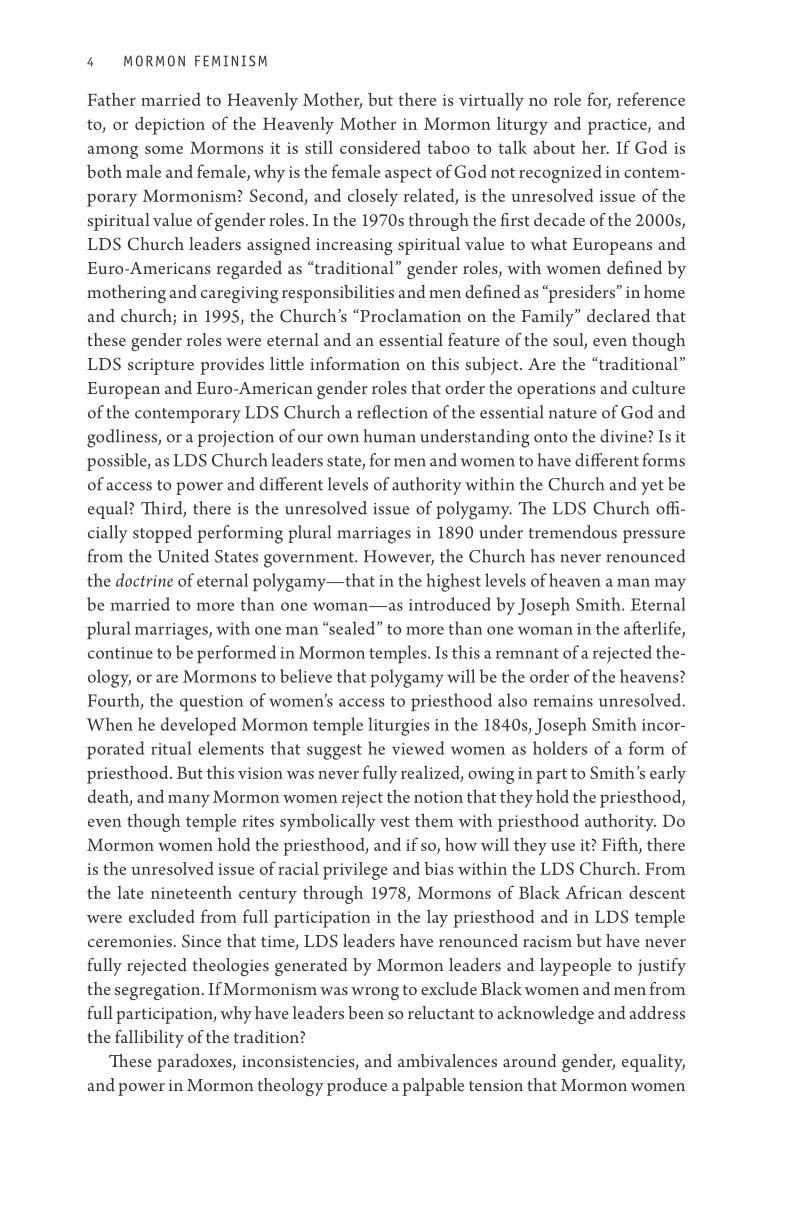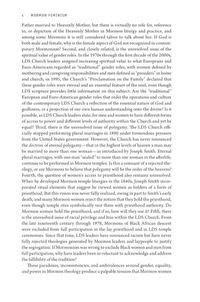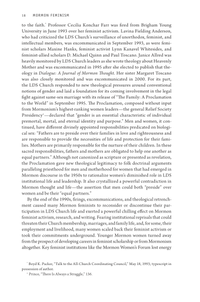Brooks argues that the FP supports gender inequality.
- Type
- Book
- Source
- Joanna Brooks LDSCritic
- Hearsay
- Direct
- Reference
Joanna Brooks, “Introduction,” in Mormon Feminism: Essential Writings, ed. Joanna Brooks, Rachael Hunt Steenblik, & Hannah Wheelwright (New York: Oxford University Press, 2016), 4, 18
- Scribe/Publisher
- Oxford University Press
- People
- Joanna Brooks
- Audience
- Reading Public
- Transcription
In the 1970s through the first decade of the 2000s, LDS Church leaders assigned increasing spiritual value to what Europeans and Euro-Americans regarded as “traditional” gender roles, with women defined by mothering and caregiving responsibilities and men defined as “presiders” in home and church; in 1995, the Church’s “Proclamation on the Family” declared that these gender roles were eternal and an essential feature of the soul, even though LDS scripture provides little information on this subject. Are the “traditional” European and Euro-American gender roles that order the operations and culture of the contemporary LDS Church a reflection of the essential nature of God and godliness, or a projection of our own human understanding onto the divine? Is it possible, as LDS Church leaders state, for men and women to have different forms of access to power and different levels of authority within the Church and yet be equal?
. . . .
For its part, the LDS Church responded to new theological pressures around conventional notions of gender and laid a foundation for its coming involvement in the legal fight against same-sex marriage with its release of “The Family: A Proclamation to the World” in September 1995. The Proclamation, composed without input from Mormonism’s highest-ranking women leaders—the general Relief Society Presidency—declared that “gender is an essential characteristic of individual premortal, mortal, and eternal identity and purpose.” Men and women, it continued, have different divinely appointed responsibilities predicated on biological sex: “Fathers are to preside over their families in love and righteousness and are responsible to provide the necessities of life and protection for their families. Mothers are primarily responsible for the nurture of their children. In these sacred responsibilities, fathers and mothers are obligated to help one another as equal partners.” Although not canonized as scripture or presented as revelation, the Proclamation gave new theological legitimacy to folk doctrinal arguments paralleling priesthood for men and motherhood for women that had emerged in Mormon discourse in the 1950s to rationalize women’s diminished role in LDS institutional life and leadership. It also crystallized a powerful contradiction in Mormon thought and life—the assertion that men could both “preside” over women and be their “equal partners.”
- Citations in Mormonr Qnas
The B. H. Roberts Foundation is not owned by, operated by, or affiliated with the Church of Jesus Christ of Latter-day Saints.



